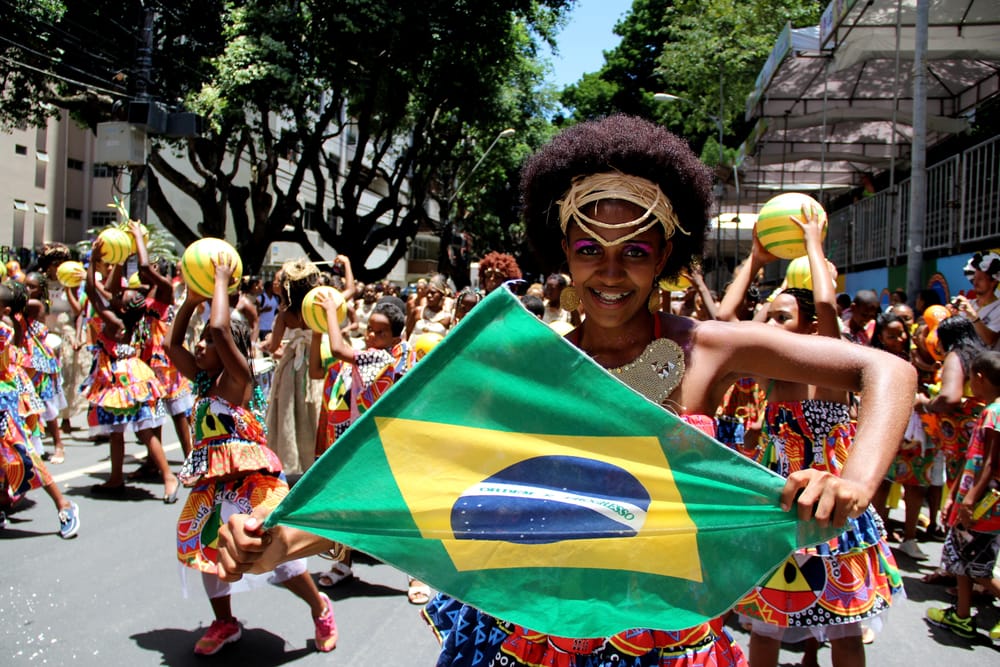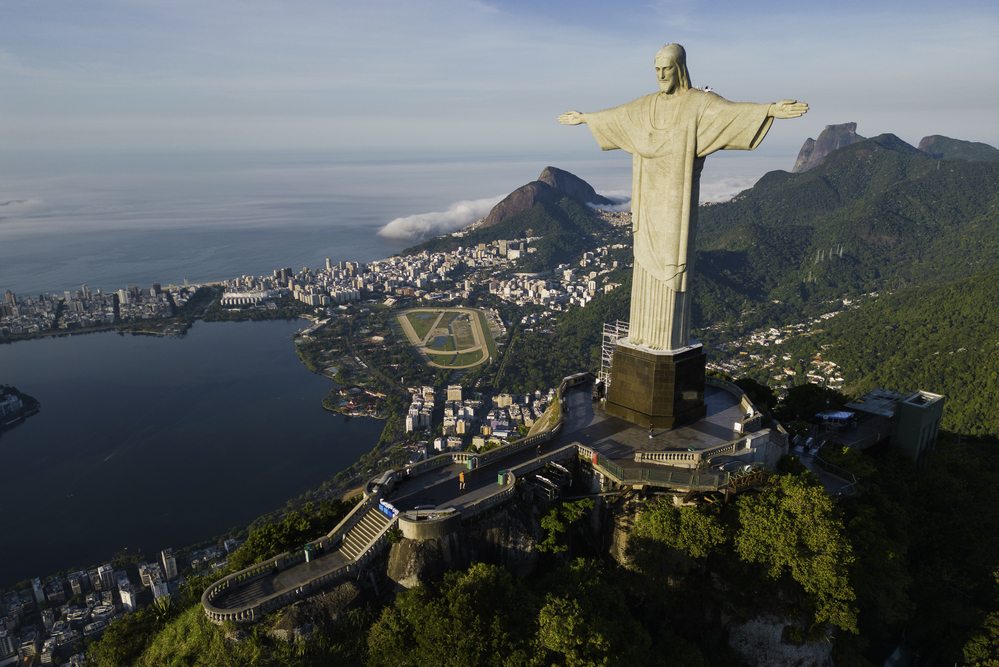When I think about Brazil, one of the first images that comes to my mind is Carnival, which is without a doubt the biggest popular celebration that we Brazilians enjoy. This festival is more than music and dance; it is an explosion of colors, energy, and joy that takes over the entire country.
Each city celebrates in its own way, some with grand parades and others with lively street parties full of people. I love how Carnival showcases Brazil’s cultural diversity and creates unique moments for everyone who takes part. In this article, I will share what Carnival in Brazil is like and the best places to enjoy this unforgettable celebration and experience up close the magic of the Brazilian Carnival.
History of Carnival
Carnival in Brazil has a history that blends European, African, and Indigenous traditions. The festival arrived with Portuguese colonizers, inspired by Entrudo, a popular celebration where people threw water and flour at each other before Lent. Over time, this practice absorbed new cultural influences and evolved into the country’s greatest popular celebration.
In the nineteenth century, Carnival began to take on a form closer to what we know today, with parades, masked balls, and traditional music. Rio de Janeiro stood out as the main stage, where samba, rooted in Black communities, became the soundtrack of the festivities. Just as in Venice, where costumes and masks are central to tradition, Rio’s Carnival gained international fame with dazzling costumes and impressive parade floats.
In other regions of Brazil, the festival followed different paths. In Recife and Olinda, frevo and maracatu filled the streets with a unique atmosphere, while in Salvador the trio elétrico revolutionized street Carnival, creating an energy comparable to the world’s greatest outdoor music festivals.
This cultural diversity turned Carnival into a spectacle of colors, rhythms, and joy that attracts travelers from all over. If you want to experience this powerful mix of energy, discover the best places to enjoy Brazilian Carnival.
The Best Places to Experience Carnival
Rio de Janeiro: the most famous parade in the world
Rio de Janeiro’s Carnival is considered not only the most famous in Brazil but perhaps the most famous in the world. Every year, millions of people gather in the city to experience days filled with music, dance, and joy. The main highlight is the samba school parade at the Sambadrome, a breathtaking spectacle that blends costumes, choreography, and creativity into performances that feel like open-air theaters. Just like a grand Broadway production, every detail is carefully designed to amaze the audience.
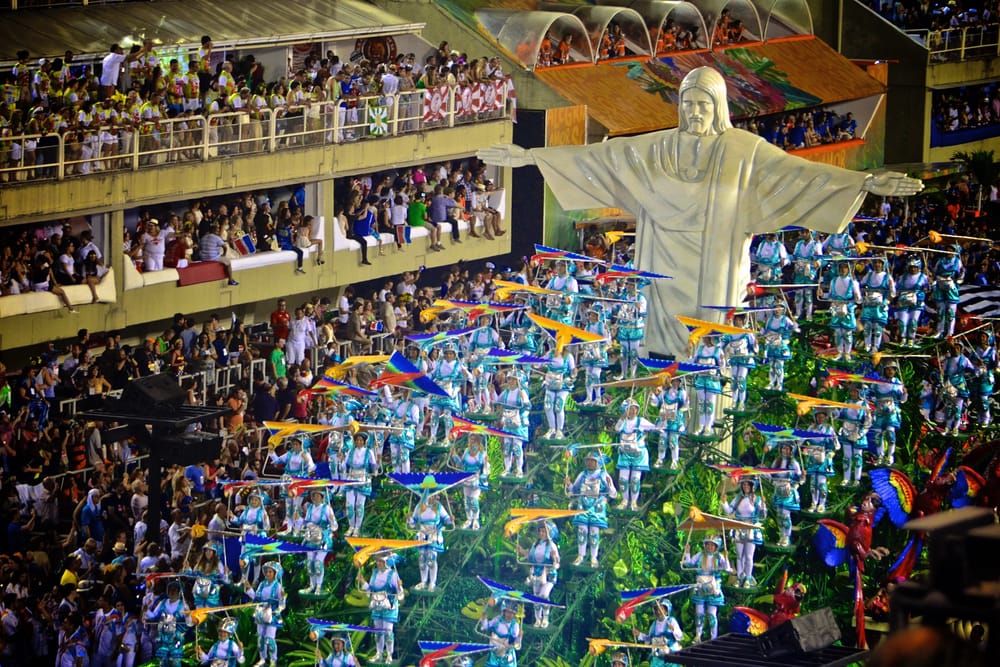
Beyond the official parades, Rio’s Carnival also spreads throughout the streets with hundreds of blocos that cater to every taste. Some are small and reminiscent of neighborhood parties, while others are massive and gather crowds comparable to large rock concerts. This variety creates a democratic atmosphere where locals and travelers can celebrate side by side.
The city’s natural setting adds a special charm. Watching costumed revelers dance with Sugarloaf Mountain or Christ the Redeemer in the background makes the experience truly unique. Just as Venice is remembered for its masks, Rio has won the world over with samba and the contagious energy of its Carnival, making it an unforgettable destination for anyone wanting to live this celebration up close.
Salvador: the Carnival of the Trio Elétrico
Carnival in Salvador offers an experience unlike anywhere else in Brazil. Instead of parades on closed avenues, the celebration takes place in the streets and is defined by the trios elétricos, massive trucks equipped with powerful sound systems where artists perform for huge crowds. It feels like joining a giant open-air music festival, but with the unmistakable energy of Bahian culture.
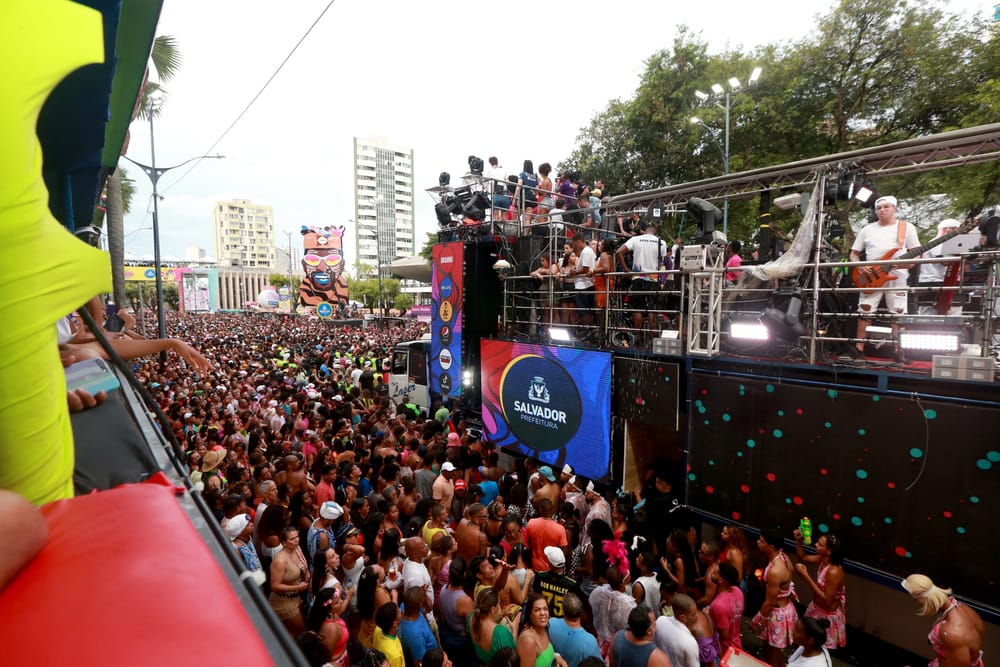
For six days, the city’s main circuits, such as Barra-Ondina and Campo Grande, are filled with revelers who follow the trios, singing and dancing nonstop. Those who prefer more comfort can choose the camarotes, private boxes that provide full amenities and a privileged view of the party. Travelers who enjoy being in the middle of the crowd can join the street blocos, moving to the contagious rhythm of axé.
Salvador’s Carnival is also a celebration of diversity and inclusion, where locals and visitors come together to share moments of pure joy. Unlike Rio, where samba takes the spotlight, in Bahia the main feature is the blend of sounds, from axé to pagode baiano, creating a unique identity. Being in Salvador during this time means experiencing a spectacular mix of music, dance, and hospitality, making it one of the most unforgettable celebrations for any traveler.
Recife and Olinda: tradition and northeastern rhythm
The Carnival of Recife and Olinda is one of the most traditional in Brazil, captivating visitors with its vibrant mix of colors, rhythms, and popular culture. Unlike Rio or Salvador, there are no samba school parades or trio elétrico trucks here. The celebration is led by frevo and maracatu, musical styles born in the region that still bring crowds to life today. Frevo, with its fast-paced music and dancers carrying colorful umbrellas, feels as energetic as a lively street dance festival.
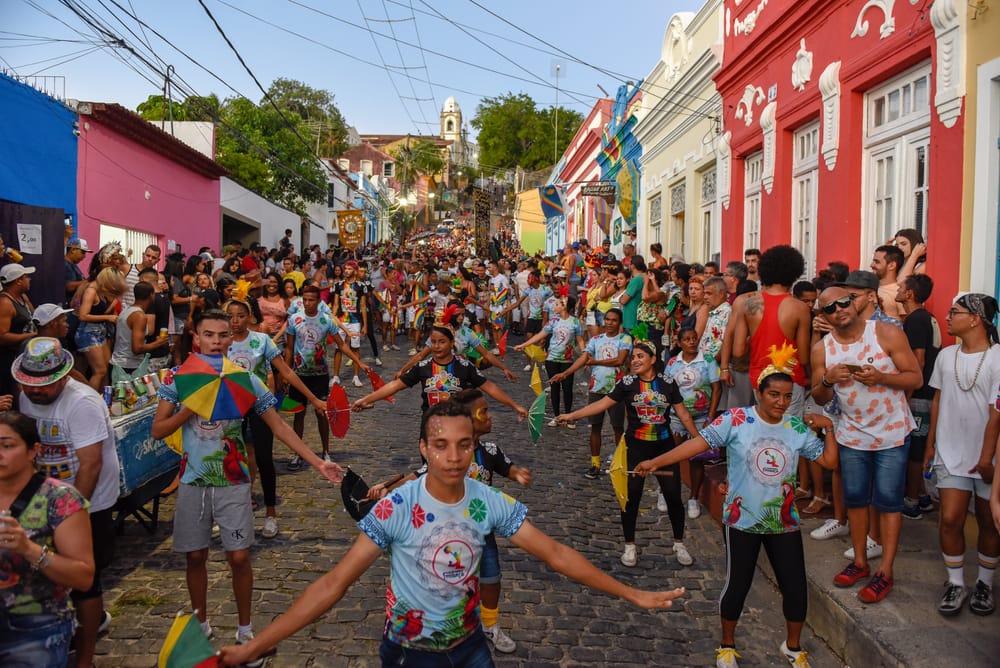
In Recife, the highlight is the Galo da Madrugada, recognized as the largest Carnival bloco in the world, drawing millions of people into the streets on Saturday morning. In Olinda, the city’s historic hills turn into a magical stage, where giant puppets parade among colonial houses painted in bright colors. The atmosphere makes you feel as if you are part of a grand cultural spectacle under the open sky.
The celebration is popular and inclusive, as most events are free, allowing locals and travelers to share the same spaces. For those looking for an authentic Carnival steeped in tradition, Recife and Olinda offer a unique experience, comparable to the most vibrant folk festivals around the world.
São Paulo: diversity of styles
Carnival in São Paulo has grown tremendously in recent years and is now considered one of the largest in Brazil. The city combines grand parades at the Anhembi Sambadrome with a vibrant explosion of street blocos spread across different neighborhoods. Much like in Rio de Janeiro, samba schools are the highlight, showcasing dazzling costumes, impressive floats, and songs that tell powerful stories.
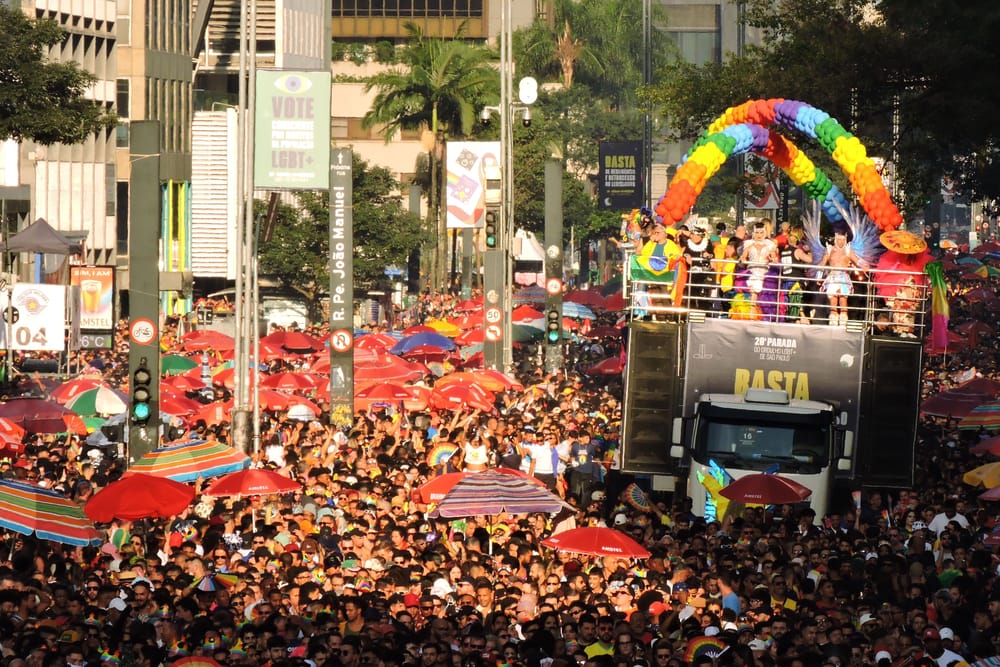
What sets São Paulo apart is the diversity of styles that attract a wide range of audiences. During the day, street blocos gather crowds along avenues and squares, evoking the energy of major urban festivals in Europe. At night, the samba school parades transform the city into a spectacle of color and music that is gaining increasing international recognition.
Another strong point is the city’s infrastructure, which makes the experience easier for travelers. Hotels, public transport, and a wide range of dining options are well prepared to welcome visitors from around the world. For those who enjoy experiencing different atmospheres in one destination, São Paulo offers everything from lively street parties to carefully organized parades. Being in the city during Carnival is a chance to discover how Brazil’s largest metropolis brings tradition and modernity together in a single celebration.
Belo Horizonte: relaxed and welcoming atmosphere
Carnival in Belo Horizonte has gained prominence in recent years and is now among the liveliest in Brazil. The city has turned into a massive stage for street blocos that attract thousands of people, echoing the energy of the celebrations in Recife and Salvador.
Hundreds of blocos spread across different neighborhoods, each with its own musical identity ranging from samba to axé and even international rhythms. The atmosphere is relaxed and welcoming, perfect for travelers seeking an authentic experience surrounded by the warm hospitality of Minas Gerais. Belo Horizonte has established itself as a vibrant destination to fully enjoy the Carnival spirit.
Florianópolis: multiple experiences in one destination
Carnival in Florianópolis is known for blending tradition, music, and the island’s natural beauty. Famous for its paradise-like beaches, the city becomes one of the liveliest destinations in southern Brazil during this festive season. The highlight is the samba school parade at Passarela Nego Quirido, which recalls the grandeur of Rio de Janeiro’s parades but in a more intimate version.
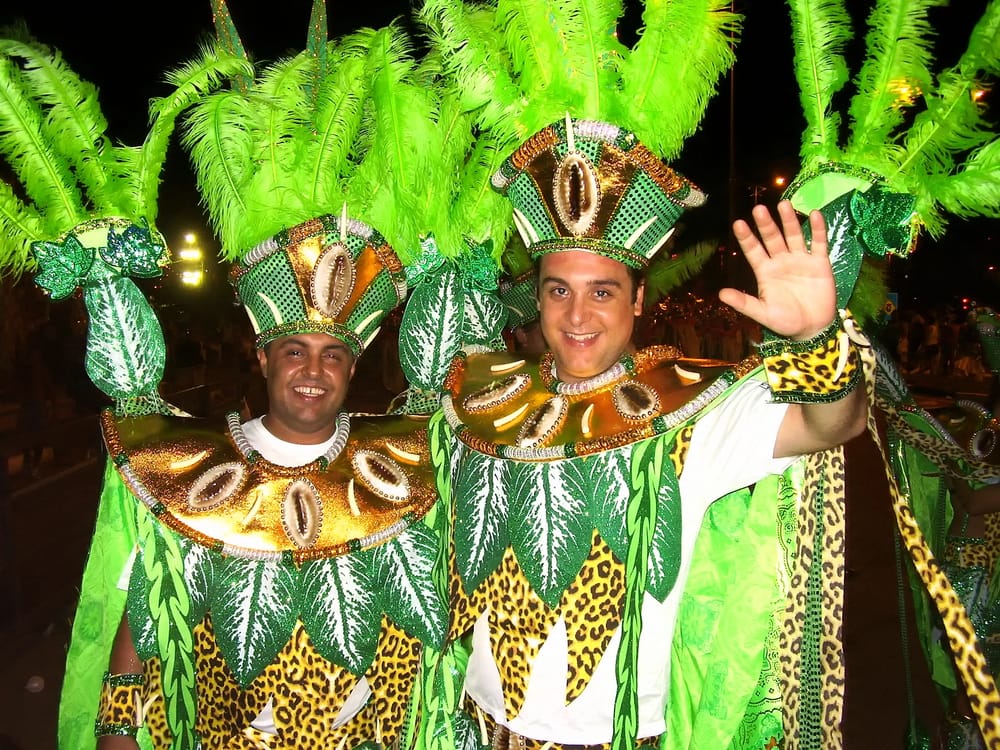
Beyond the official parades, Florianópolis offers street blocos that spread throughout the city center and along the beaches. This combination gives visitors the chance to enjoy different experiences in a single destination, from the contagious energy of the streets to the laid-back vibe of seaside parties.
Another highlight is the diversity of its audience. The city welcomes travelers from all over Brazil and abroad, drawn by the mix of traditional Carnival and modern parties. Being in Florianópolis during this time means experiencing a celebration that unites sun, sea, and joy in a truly unique setting.
Practical tips for travelers
Traveling to Brazil during Carnival requires some planning to make the experience even more memorable. The first tip is to organize the trip in advance. Flights and accommodations are in high demand, so it is best to book at least a few months ahead. Just like major international events, such as New Year’s Eve in famous cities, Carnival in Brazil attracts huge crowds and quickly drives prices up.
Safety is another important factor. Since Carnival takes place in the streets and the blocos draw large crowds, it is better to avoid carrying valuables, use small bags, and always keep an eye on your belongings. Choosing light and comfortable clothing will also help you enjoy the party without worries.
Picking the ideal destination depends on each traveler’s style. Those who want grandeur and impressive spectacles might prefer Rio de Janeiro or São Paulo. Travelers who enjoy live music and the energy of crowds will find Salvador unforgettable. Recife and Olinda are perfect for those seeking tradition and popular culture, while Belo Horizonte and Florianópolis combine lively blocos with a more relaxed atmosphere.
It is also worth including experiences beyond the celebrations. Exploring beaches, historic centers, or tasting local cuisine makes the trip even more complete. Carnival then becomes a unique cultural immersion.
Conclusion
Brazilian Carnival is unique because it reflects the country’s cultural diversity. Each region celebrates in its own way, offering travelers completely different experiences. This variety makes Carnival in Brazil comparable to a cultural mosaic, where each piece has its own color, rhythm, and style.
In Rio de Janeiro, the samba school parades at the Sambadrome resemble grand theatrical productions, with dazzling scenery and flawless choreography. In Salvador, the festival takes the form of a massive street music event, where the trios elétricos and axé keep crowds dancing non-stop. In Recife and Olinda, tradition comes alive through frevo, maracatu, and giant puppets that transform the streets into a vibrant folkloric parade.
São Paulo, with its cosmopolitan spirit, stands out for its street blocos and well-organized parades, while Belo Horizonte charms visitors with the authenticity and contagious energy of its blocos. Florianópolis blends beachside beauty with samba school parades and modern parties, creating a unique experience in southern Brazil.
This cultural diversity makes Brazilian Carnival an incomparable celebration. Traveling during this time is discovering that in each city, joy finds its own expression. And when you come to experience Carnival in Brazil, be sure to share how it was for you.
